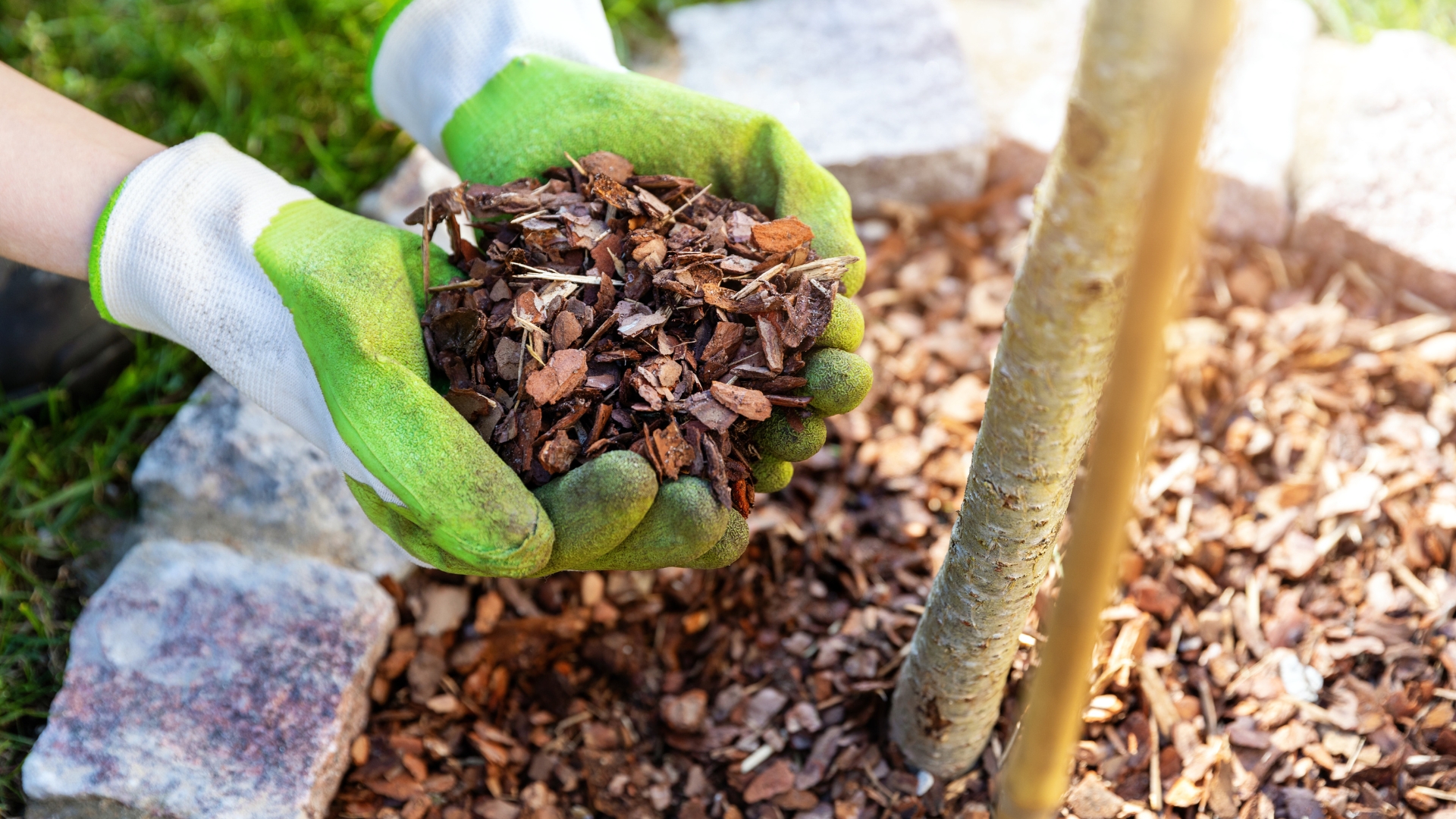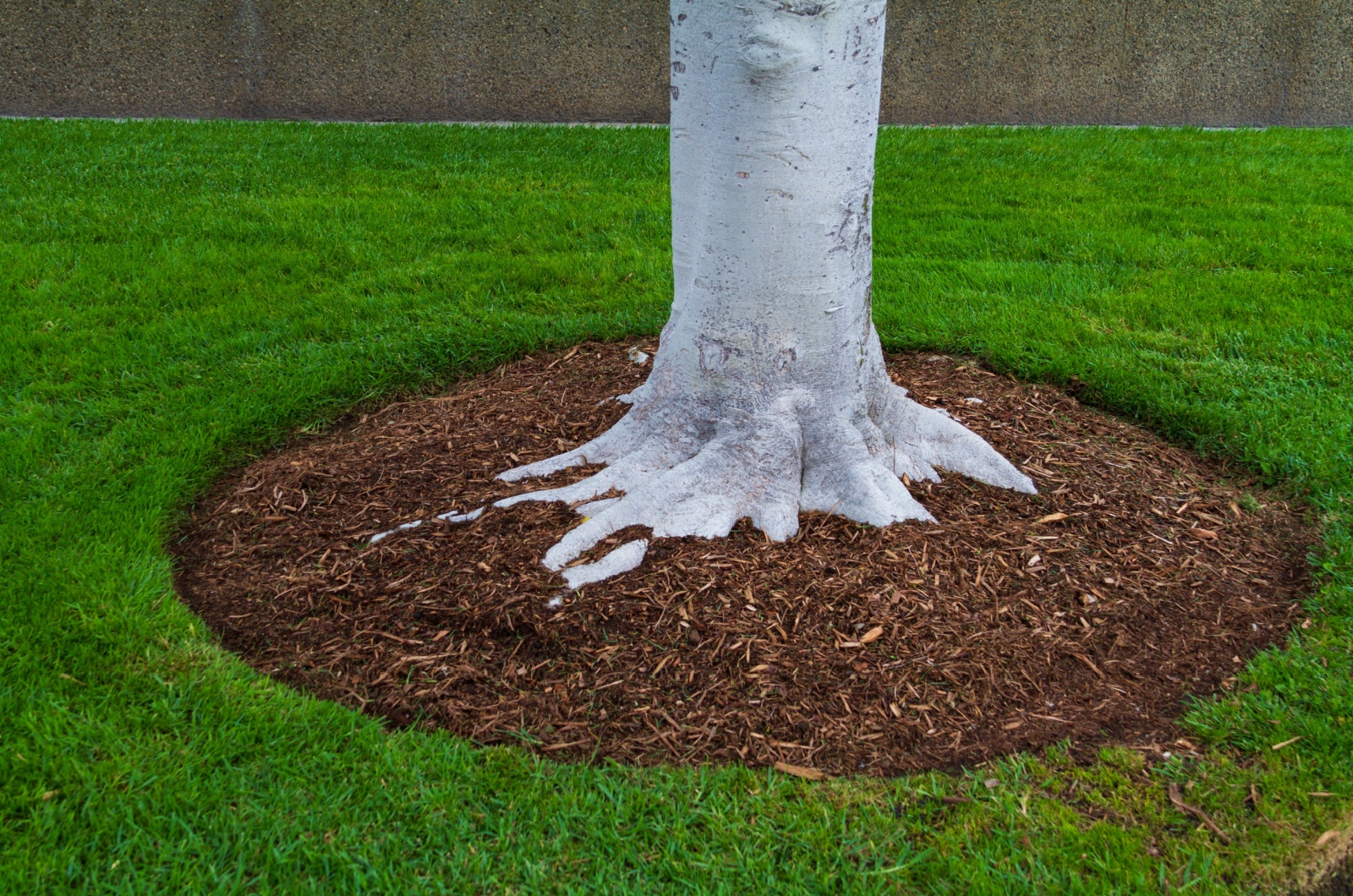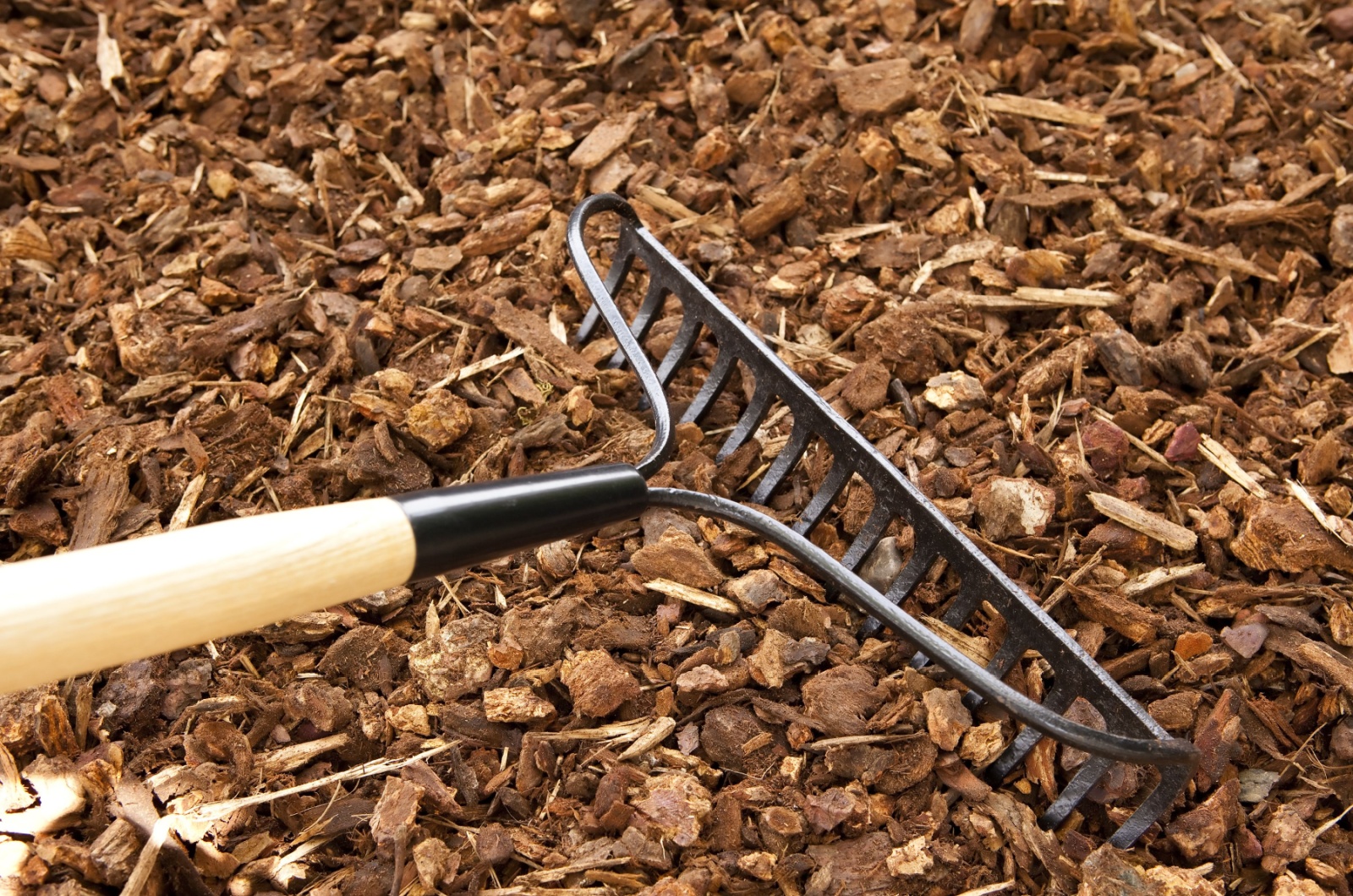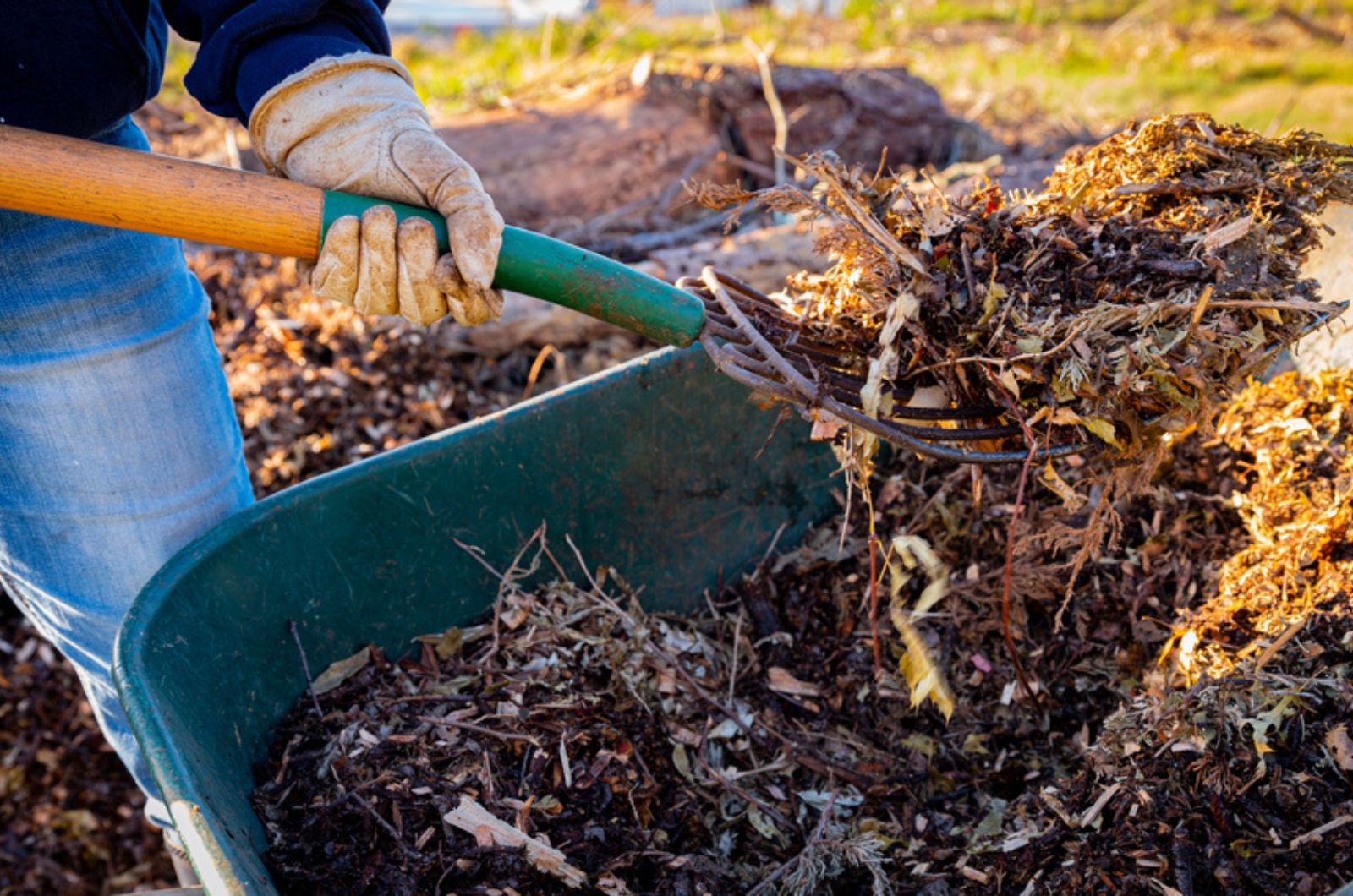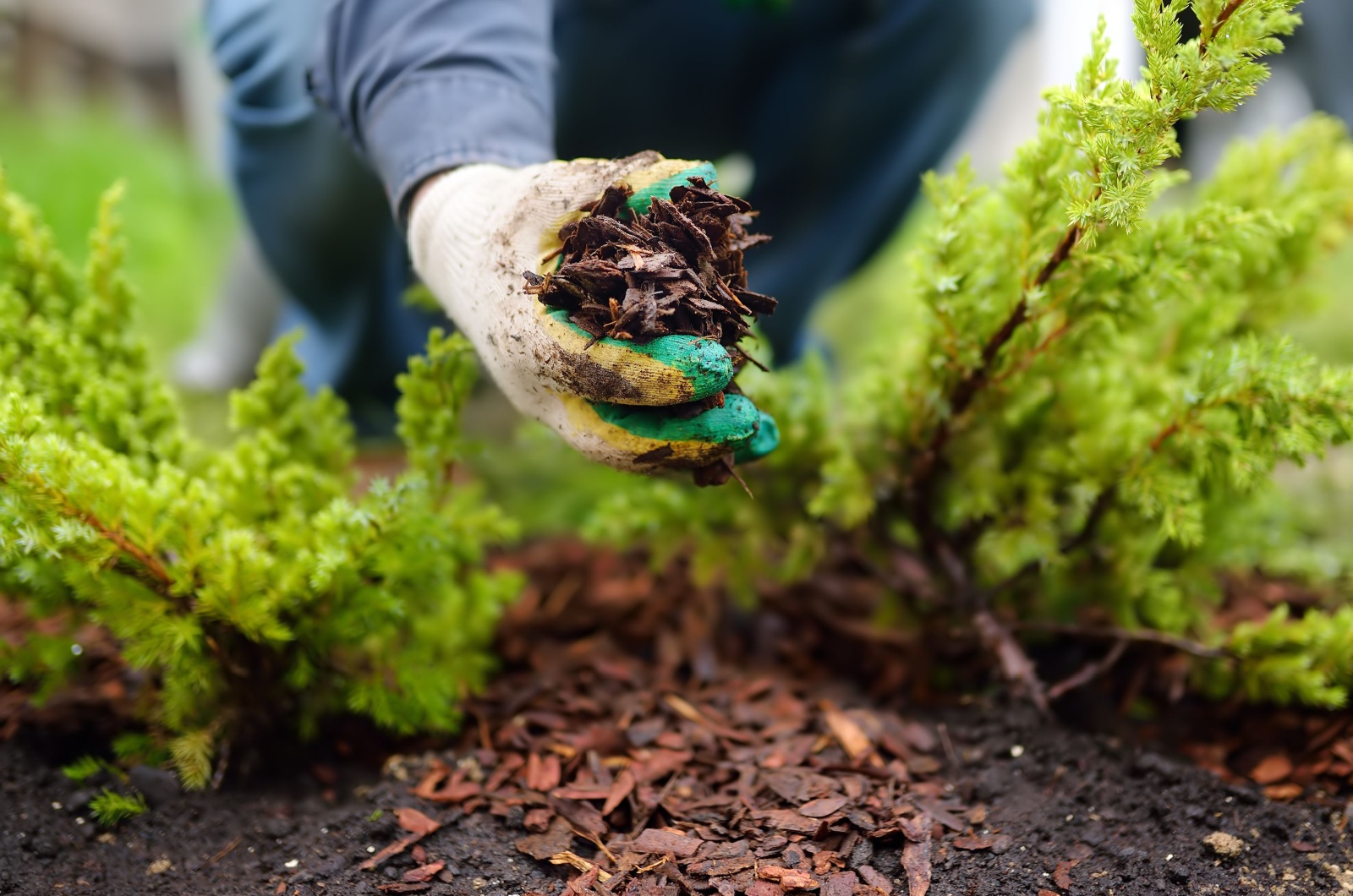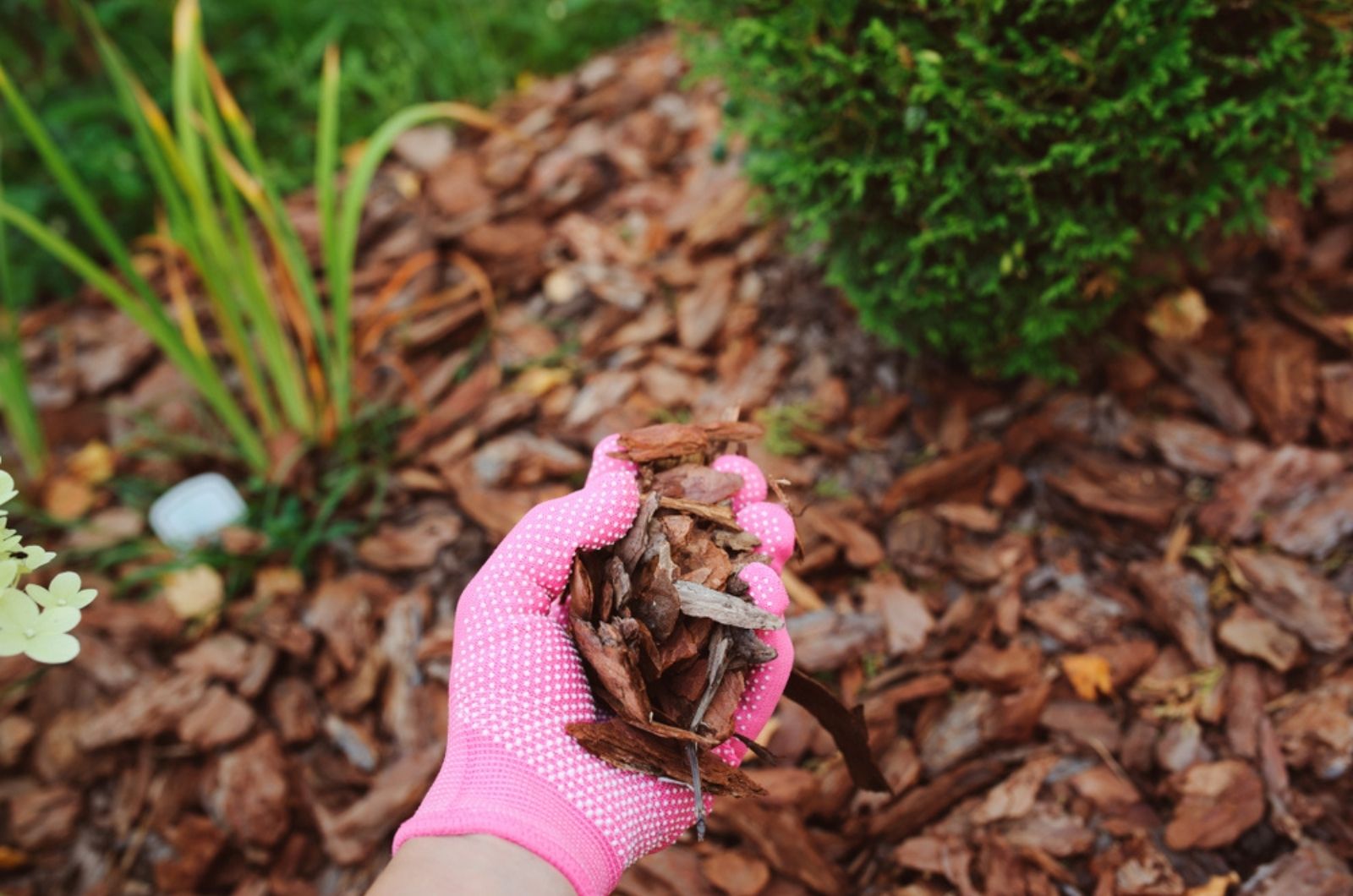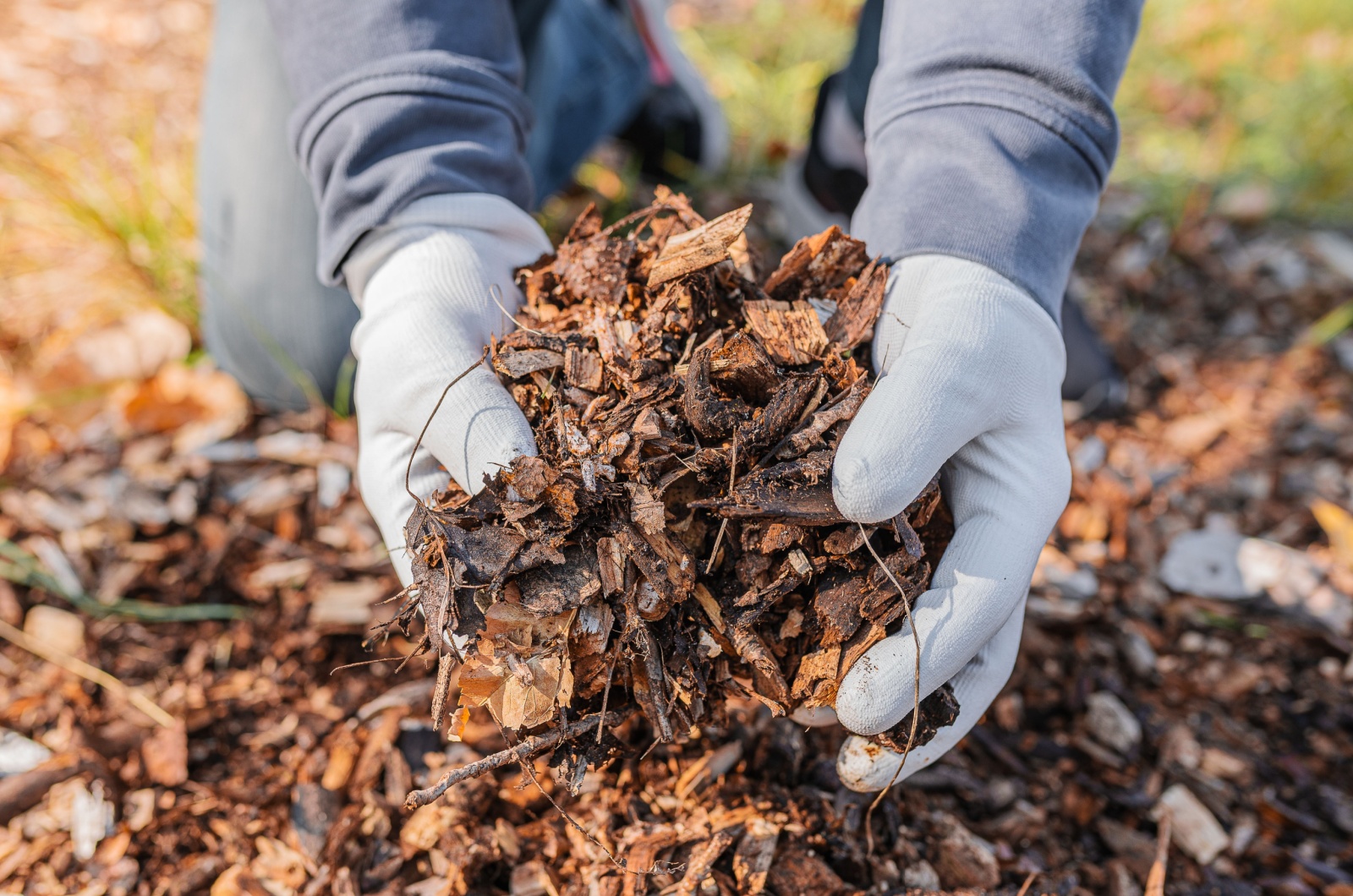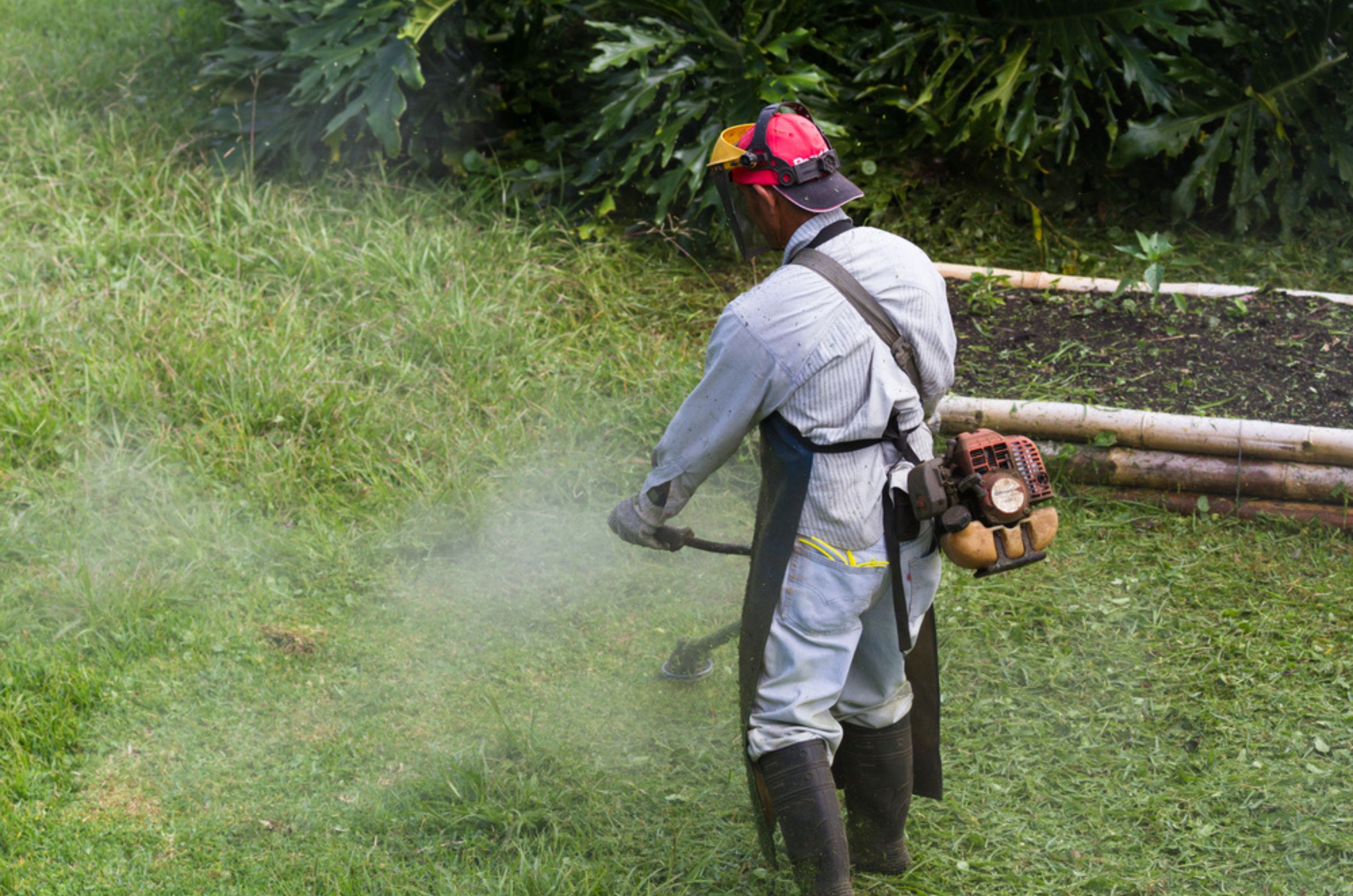Avoiding common mulching mistakes is crucial for maintaining a healthy and thriving garden.
There are several mulching mistakes that can take away all the benefits that come with it, such as applying too much or too little mulch, not raking your old mulch, or using the wrong kind of mulch.
In this guide, we’ll help you steer clear of common mulching mistakes. Learn how to mulch properly to keep your garden healthy and vibrant.
1. High Mulching Around The Trees
A mulch volcano is a technique where mulch is piled up around the tree – although it might look attractive, this can actually harm the tree. Why?
Well, it’s because a thick layer of mulch placed against the tree’s base can prevent normal airflow and suffocate the roots. Plus, excess mulch can also attract pests and diseases that can lead to rotting.
Keep about a two to three inch layer of mulch around any trees or shrubs, just like you would in other mulched areas. Even a narrow, mulch-free ring around the trunk is OK.
To allow the tree to breathe, remove some of the mulch if you have already made a volcano out of it.
Related: What Is Leaf Mulch And How You Can Make It?
2. Not Raking Old Mulch
Adding mulch is a nonstop gardening activity. But over time, mulch decomposes or is removed and scattered by wind, rain, or other elements. Therefore, it needs to be replaced frequently.
Don’t just add fresh mulch on top of the old one; instead, take the effort to rake the old stuff away. It is possible to reuse old mulch, but it must be mixed in with the new material.
Maintaining the existing mulch layer and adding more on top of it causes the soil to become compacted, which eventually suffocates the plant roots and decreases water absorption.
So, to make it more loose, rake away old mulch and fluff up the soil!
3. Adding Too Much Mulch
Although mulch is super beneficial to the garden, too much mulch can lead to certain issues. These include water entrapment in the roots of the plants, and also soil compaction that can reduce oxygen availability.
Luckily, this is super easy to fix – all you need to do is rake the mulch and leave a layer of two to three inches behind.
Don’t throw this excess mulch away, but rather use it in garden beds or save it for filling in the patches.
Related: Here’s Why You Should Mulch Your Garden In Late Summer
4. Adding Too Little Mulch
There’s such a thing as adding too little mulch as well. In this case, you won’t get the benefits that come with adding mulch, such as water retention and weed suppression.
To avoid this, always aim to add about a 2 or 3 inch-layer of mulch. Add more if the layer is thin. You should always have some extra mulch that you can use for patchy areas!
5. Mulching Too Early
I bet you’ll hurry to finish all your gardening chores as soon as the weather gets warmer; however, you might want to take it easy with mulching.
Let the soil warm up first before adding any mulch because it might keep the soil cold, which makes it difficult for seedlings to grow properly.
It’s best to wait until mid- or late-spring to add mulch. Use this extra time to get rid of weeds and rake out the existing mulch!
You might like: Mulch For Potted Plants: Why, What, And How To Use
6. Using The Wrong Mulch
It can be overwhelming to figure out what type of mulch to use because there are so many options available. Each mulch type has unique characteristics, so you should find the right kind for your garden.
If you need mulch for garden beds, bark and wood chips are good choices; hay, leaves, and grass clipping are good for vegetable beds.
I would recommend you avoid mulches that have been treated with dyes or chemicals – it’s always better to go natural!
If you use the wrong mulch, it can take some time to remove it, so wait patiently and start over.
Related: Are Pine Needles A Good Mulch Material?
7. Not Weeding Before Adding Mulch
Mulch is all about suppressing weed growth. But that’s not possible if there’s already weeds growing, especially if they’re quite large and established!
These are persistent plants that will just keep coming back. So, to avoid them, you should always pluck them out before adding your mulch.
Otherwise, you’ll have to dig through mulch to get rid of weeds!

